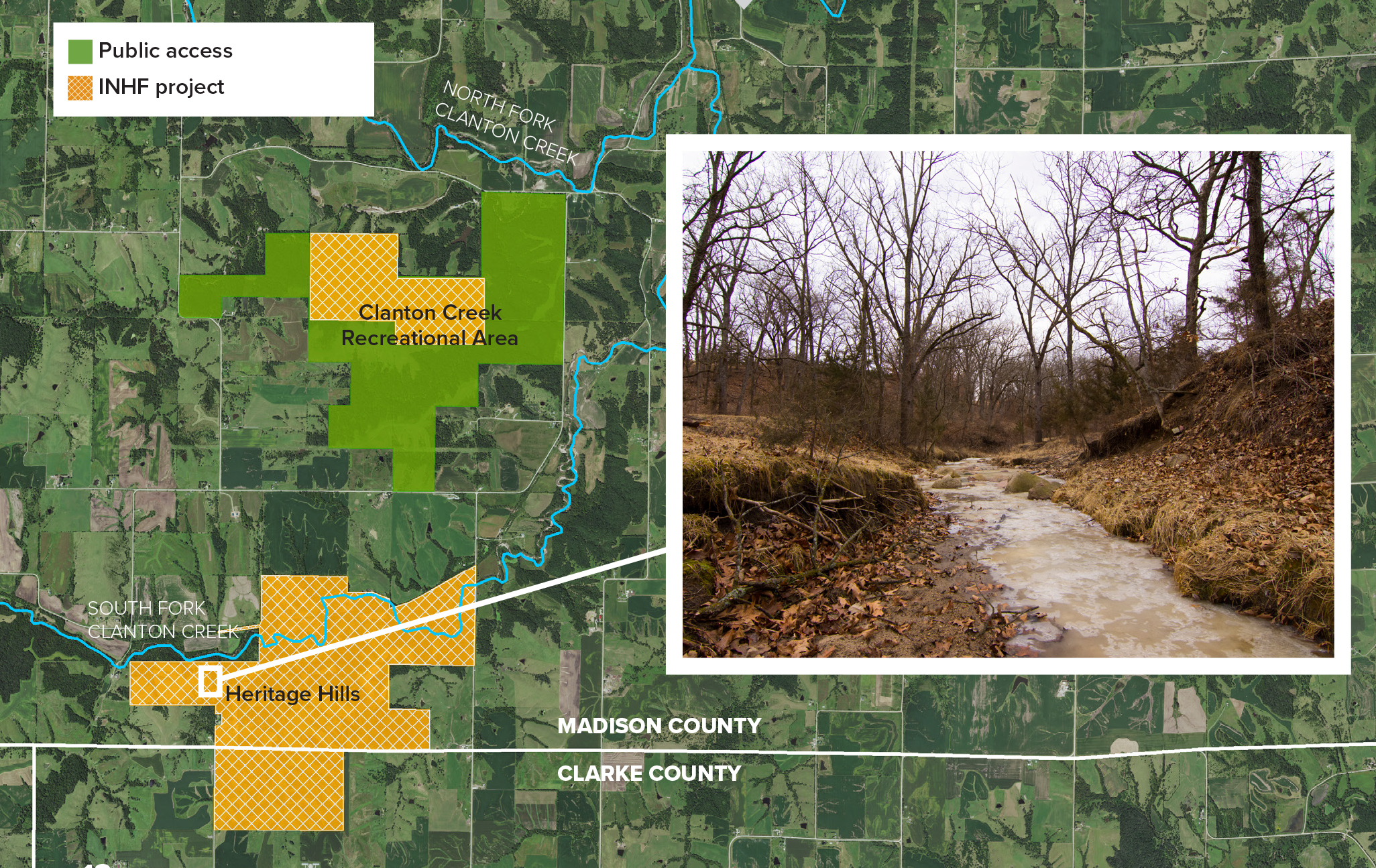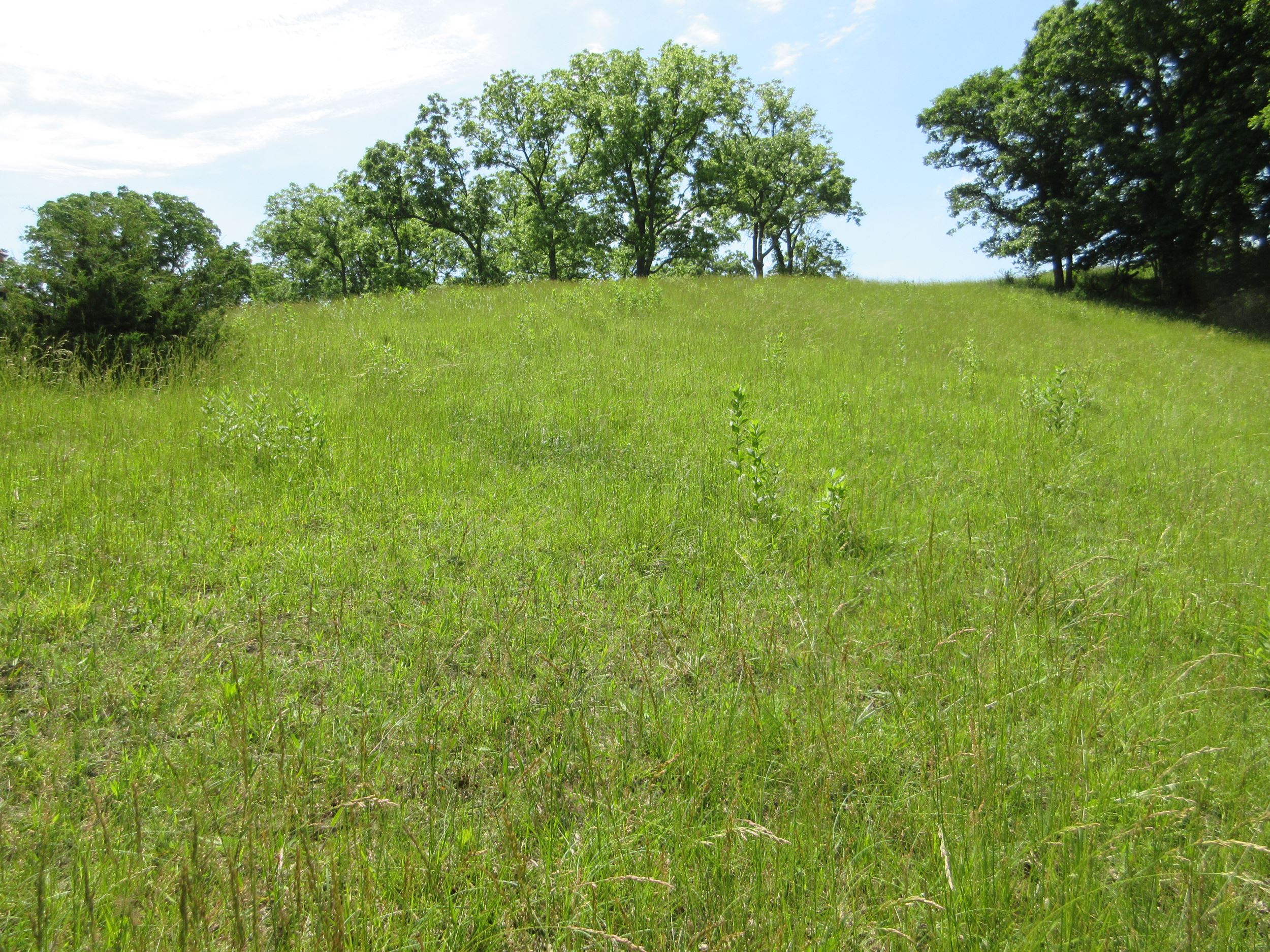A Walk in the Wild
By Heather Jobst on March 27, 2017 in Blog

Hiking through the woods on a warm June evening, dodging mosquitoes, I felt a sense of anxiety start to creep in. INHF had just taken a chance to protect a large, road-less area in southern Madison and northern Clarke counties. There was evidence indicating significant wildlife and plant species, like the threatened Red-shouldered hawk, inhabited the area. But were those same species on this property?
This night we were looking for bats: A small animal often vilified by humans but important to a healthy landscape. With Central College biology professor and INHF advisor Dr. Russ Benedict and several Central College students, we scouted a suitable study location and were soon scurrying to set up fine mesh nets before the sun set and the bats become active.
Soon, someone found a Northern Prairie Skink, a small, brown lizard whose tail will break off if attacked. Then the Scarlet Tanagers, a brilliantly red neotropical migratory bird with jet-black wings that requires large blocks of woodland, started singing. At dusk a Whip-poor-will started its unmistakable song and a smile crept across my face. In a short time and on a small corner of this 1,013-acre property, we had already crossed paths with several species, many considered to be Species of Greatest Conservation Need by the Iowa DNR, telling us this is a special place. Almost as if they were saying thank you for protecting their special home.
A vast wildness
Southern Madison County is considered by many a hidden gem with its rugged, wooded topography. Spend any time in the neighborhood and you will soon find a feeling of wildness. With the Jeffersonian Public Land Survey System determining Iowa’s road system, there are few places where you are more than a half mile from a road. But this area is more than two miles wide and has no through roads. These roadless areas deliver a sense of uninterrupted wildness that is rare in Iowa, yet so important in our connection with nature. Here you can hear the wind through the prairie grasses, turkeys looking for food under a layer of oak leaves and squirrels chasing each other through the trees.
INHF and the Iowa DNR are working together to protect this special place, Heritage Hills, for Iowans and the creatures that live here. Increased recreational opportunities in central Iowa, as well as opportunities for a wilderness-like experience, are among the most frequent requests to the Iowa DNR from the public. Coupled with 1,013 acres of oak-hickory woodland, remnant prairie, grasslands and cropland, the importance of protecting this vast landscape becomes more evident, and is creating a protected natural corridor with existing public land. Less than a half mile away is Madison County Conservation’s Clanton Creek Natural Resource Area, an 1,100-acre area popular with hikers and hunters.

Nick Palaia, wildlife biologist for the U.S. Fish and Wildlife Service’s Wildlife and Sport Fish Restoration (WSFR) program, visited the property as a potential funding partner. “When I first heard about this property, I was excited by its size and proximity to the Des Moines area, allowing for several people to visit at once and not trip over each other,” said Palaia. “Many memories will be created here.”
Visitors will be able to hike the expansive property and observe the abundant wildlife in search of a wild experience. A successful hunter will get a backcountry experience and the satisfaction of hauling their harvest over rugged terrain.
The future of Heritage Hills
“With its mature forests and a creek that remains in a fairly natural state, this area is an important part of a broader landscape in south-central Iowa,” said Dr. Benedict. “It is a great place with the potential to be amazing.” That’s where the partnership between INHF and Iowa DNR comes in.

Over the next few years, INHF will work with the Iowa DNR to secure the funds needed to transfer this property into public ownership, restore the upland areas to prairie for uninterrupted habitat and rehabilitate the remnant prairie.
Palaia was immediately struck by the surrounding grassland landscape filled with grazing cattle. “When I was a kid, my brother and I used to count cattle out our respective sides of the car. Whoever counted the most got a candy bar. Now you can drive the same stretch and count none. The ability to easily bring in cattle to graze will enhance restoration of the prairie and grasslands and contribute to a working landscape,” said Palaia.
That June evening, five Northern Long-eared bats, a federally threatened species, and one Indiana bat, a federally endangered species, visited us. The Indiana bats likely hibernate in the former mines at Sodalis Nature Preserve in Hannibal, Mo., a site INHF recently helped protect due to its significance as a hibernation site for Indiana bats and other bat species.
The midnight hike out was humid and still warm. Worn-out from the long night and the day’s heat, I noticed the night sky was filled with brilliant stars and heard the crickets and cicadas calling. Despite the feeling of exhaustion, there was relief and satisfaction about the chance INHF took along with an overwhelming excitement wondering what other wildlife lives here.